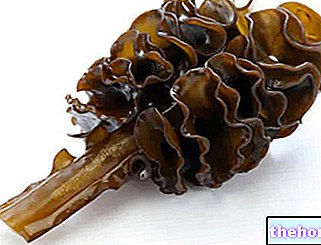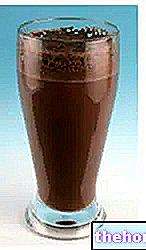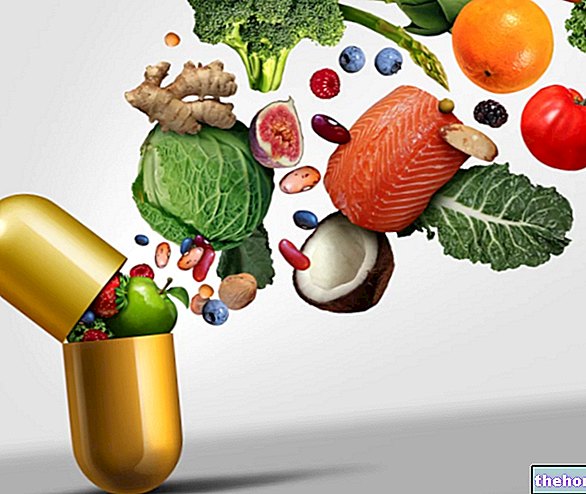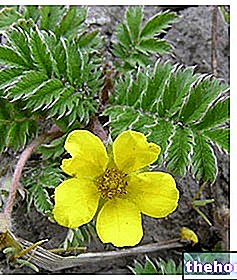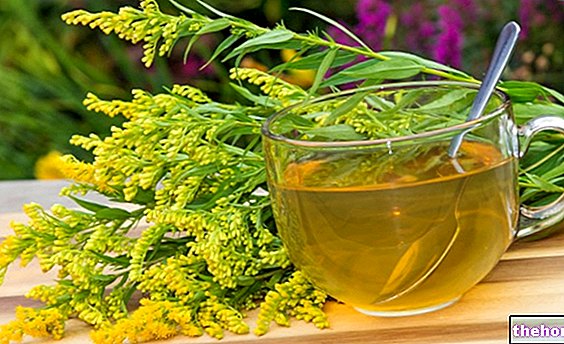Generality
Glucomannan is a high molecular weight polysaccharide, formed by the concatenation of many small units of glucose and mannose (a very common sugar in plant polymers).
Glucomannan is extracted from the tuber of Amorphophallus konjac (see figure), a plant used in Japanese cooking as a gelling agent.
Purified glucomannan is considered to be one of the most effective products for promoting weight loss.
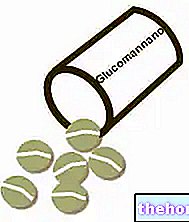
This fiber has in fact the ability to attract a lot of water, increasing its volume up to 60-100 times and giving rise to a soft gelatinous mass.
Indications
Why is glucomannan used? What is it for?
Glucomannan is mainly used as a laxative, although several studies have now well characterized its hypoglycemic and lipid-lowering activity.
The clinical applications of glucomannan can be traced back to its biological role.
In fact, once ingested, glucomannam reaches the intestinal environment unaltered, resisting the hydrolytic activity.
In the intestinal lumen, glucomannan is degraded by the intestinal bacterial flora, with the formation of biologically active molecules such as short-chain fatty acids, mannose and other sugary residues.
These molecules would exert the metabolic actions of glucomannan, also acting directly on the intestinal microbiota.
To the metabolic action of the glucomannan catabolites would be added the mechanical action (produced by the undigested glucomannan share), capable of increasing the fecal mass by recalling water and facilitating the evacuation, and at the same time slowing down the intestinal absorption of sugars and fats .
Properties and Effectiveness
What benefit has glucomannan shown during the studies?
In addition to the well-characterized laxative activity, evidently supported by the contextual intake of liquids, recent studies have ascribed to glucomannan additional properties that are precious for the human organism.
In a very recent clinical trial, daily supplementation with 1 g of glucomannan in 20 obese women, would have contributed to a significant lowering of blood LDL cholesterol concentrations, thus reducing cardiovascular risk. Positive activity would also be observed for fasting glucose and glycosylated hemoglobin.
The data of other works, which attribute antiobesigenic activity to glucomannan, are also very interesting. More precisely, the intake of about 4 g of glucommanan per day, in a controlled low-calorie dietary context, would have improved adherence to the diet, contributing at the same time, both to a further lowering of lipid and glycemic concentrations, and to a more adequate weight loss.
By virtue of these results, glucomannan is currently used successfully as an adjuvant to the low-calorie diet in weight loss.
Dosage and method of use
How to use glucomannan
The normally recommended intake dose varies from 1 to 4 grams per day.
Glucomannan supplements are available in dry extract-based powder or tablet form. The best time to take them is half an hour before main meals, in order to favor the maximum reduction of appetite.
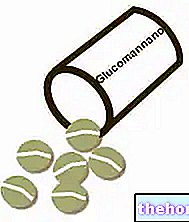
In fact, if the quantity of water is not sufficient, glucomannan could even accentuate constipation.
Generally, there are supplements on the market containing a number of 500 mg glucomannan capsules.
The recommended dose is 6 tablets per day, one of which can be taken before breakfast, three before lunch and two before dinner. If, on the other hand, the evening meal is more abundant than the afternoon one, it is better to take the maximum dose (3 tablets) before dinner.
Side effects
The most commonly observed adverse reactions following the use of glucomannan affect the gastrointestinal tract and include: bloating, flatulence, abdominal distension and cramping pains.
More rare is the onset of diarrhea or intestinal or esophageal obstruction; the latter eventuality is generally linked to the intake of glucomannan tablets immediately before bedtime, while intestinal obstructions are more likely when the supplement is taken in the context of a low-fluid diet.
Contraindications
When should glucomannan not be used?
The use of glucomannan is contraindicated in case of hypersensitivity to the active ingredient, intestinal obstruction and esophageal pathologies.
Pharmacological interactions
What drugs or foods can modify the effect of glucomannan?
It has been widely demonstrated that glucomannan can reduce intestinal absorption of fat-soluble vitamins, taken both in supplement form and through food.
Precautions for use
What do you need to know before taking glucomannan?
The use of glucomannan during pregnancy and subsequent breastfeeding should be avoided or supervised by medical personnel.
In order to avoid intestinal blockages, it is recommended to take an adequate amount of fluids together with glucomannan and to avoid taking it before going to bed.
Select plant Fir Acacia Acerola Sorrel Yarrow Yarrow Yarrow Aconito Adatoda Garlic Agnocasto Agrimonia Alchemilla Alkekengi Aloe Altea Witch Hazel Ammi or Visnaga Pineapple Andrographis Anemone Pulsatilla Angelica Anise Star Anise Japanese Star Anise Bitter Orange Bitter Areca Arnica Harpagophytum Arpagophyte Artemisia Asteragus Basil Asparagus Asparagus Peruvian Asparagus Asparagus Asparagus Hawthorn Boldo Borage Shepherd's Purse Boswellia Bucco Butea superba Cocoa Coffee Cajeput Calamus Calamus Marigold Camedrio Chamomile Roman Chamomile Camphor Cinnamon Ceylon Maidenhair Capuchin Artichoke Cardamom Cardiac Thistle Asian Thistle Carvi Cascara Cassia Catecu Catha Cabbage Celandine Chicory Centaurea Cinnamon Cypress Celandine Chives Cypress Coca Cola Colchico Combreto Condurango Comfrey Coriander Cranberry Barberry American Chrysanthemum Cumin Turmeric Damiana Digital Dioscorea Drosera Dulcamara Dunalilella Echinacea Eder to Ephedra Elenio Eleutherococcus Helichrysum Evening primrose Horsetail Alfalfa Erica EuphrasiaErisimo Escolzia Eucalyptus Farfara Farfaraccio Calabar bean Fenugreek Fennel Phytolacca Buckthorn Ash Fumaria Japanese Mushrooms Galega Ganoderma lucidum Garcinia Cambogia Mulberry Gentian Juniper Broom Ginkgo Biloba Ginseng Gramigna Grindelia Guaiac Guarana Guggaghulacca Konstantin Hibiscus Hyacinthian Hyssop Lemongrass Lespedeza Lovage Icelandic lichen Lemon Linen Lippia Licorice Lobelia Hops Maca Marjoram Corn Mallow Manna Horehound Horehound water Matè Melaleuca Sweet Clover Melissa Mint Myrrh Blueberry American cranberry Momordica Morus Alba Muira puama Nepeta Niaouli Nigella Walnut Walnut Olcemonata Orthonis Nettle Poppy Papaya Parietaria Feverfew Passiflora Chilli Perilla Periwinkle Phyllanthus Plantain Picrorhiza Pilosella Pine Piscidia Podophyll Polygala Grapefruit Parsley Psyllium Pueraria mirifica Holly Pyge um Quassia Oak Rhubarb Ratania Rauwolfia currant Castor bean Rhodiola Rosa canina Rosemary Rue Willow Sarsaparilla Sage Elder Sassafras Sedum Ergot Senna Serenoa repens Soy Solidago spirulina Tamarind Tansy Dandelion Badger Tea Linden Thyme Tormentilla Clover Trefoil Fibrin Tuille Veriburnum Veriburnum Veriburnum Veriburnum Veriburnum Veriburnum Veriburnum Veriburnum Veriburnum of thought Mistletoe Vine Withania Yohimbe Saffron Ginger Pumpkin Select disease Juvenile Acne Acne Rosacea Tinnitus Aerophagia Tendon Affections Aphonia Aphthae Algae Functional Bad Breath Breastfeeding Allergy Anemia Anguish Anxiety Arteriosclerosis Calculus Arthritis Gouty Arthritis Bleumatoid Arthrosis Asthenia Asthenia Man Asthenia Woman Asthenia Gallstones Kidney Stones Salivary Stones Baldness Androgenetic Candida Fragile Hair Caries Headache Cellulitis Motion sickness Cystitis Climacteric Cholecystopathy High cholesterol Ulcerative colitis Colonoscopy Bruises Em atoms Convalescence Couperose Depression Dermatitis Diaper Dermatitis Diabetes Diarrhea Erectile dysfunction Dyslipidemia Dysmenorrhea Dyspepsia Disturbance of vision Hemorrhoids Epistaxis Erethism Cardiac Fever Fibromyalgia Flatulence Phlebitis Gastritis Hypertension Hypertension Hypertension Hypertension Hypertension Hypertension Hypertia Renal inflammation Insomnia Throat Thinness Menopause Meteorism Mononucleosis Alzheimer's disease Crohn's disease Nausea Vomiting Obesity Dark circles Onychomycosis Osteoporosis Dry skin Periarthritis Porrhoea Low pressure Prostatitis Psoriasis Cold Breast fissures Anal fissures Gastroesophageal reflux Nasopharyngitis Pre-pharyngeal Rolls (fat abdominal pain) Sinus syndrome Abdominal pain Fatty liver Constipation Stomatitis Stress Cough High triglycerides Ulcer Burns Brittle nails Hot flashes Warts Dizziness Own ty herbal Abbronzanti Abortive adaptogenic Aphrodisiac bittering analgesic anesthetic Anorectics analgesic antacid antiallergic anti-asthmatic Antibiotic catarrh Anticellulitiche anticonvulsive Antidiaforetiche antidiarrheal edematous anthelmintic antiemetic Antiemorroidarie antiphlogistic Antiidrotiche Antinevrotiche Antioxidants antipyretic antirheumatic antiscorbutic Antiseptic antispasmodic anti-uric Aperitive Flavoring Astringents Balsamic Bechiche Capillarotrope cardiotonic Carminative Cathartic caustics Cicatrizant cholagogue choleretic Dyes Decongestants Deodorants Depuratives Diaphoretic Cleansers Disinfectants Detoxifiers Thirst quenchers Diuretics Exciting Emetics Emmenagoghe Emollients Hemostatic Energy Hepatoprotective Expectorants Eupepticics Photosensitizers Galactophores Galactofuges Galactogae Moisturisers Immunostimulants Hypertensive Hypothesizing Hypotassays and Narcotic Nerves Nourishing Odontalgic Pectoral Purgative Revulsive Remineralizing Refreshing Rubefacant Scialagoghe Sedative Soporifera Sneezing Stomachic Stomatics Narcotic Tenifuga Tonic Vasoconstrictors Vasodilators Vermifuge Vescicators Vitaminic Volneraries

